Replacing Trade Show Giveaways With Promotions That Work
For decades companies were satisfied to give away trade show premiums that built brand awareness and didn’t do much more. Company logos appeared on everything from camouflaged jackets to rubber ducks. Most ended up discarded or given away to friends and family. Now marketers are reexamining their strategies and replacing free gifts with promotions.
A promotion is an incentive to act – it is something that will directly generate qualified leads and drive sales.
Building a successful promotion
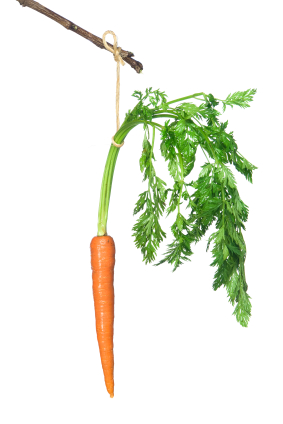 The first step is to define your target customer and decide what you are trying to accomplish. Every business wants to increase brand awareness but now marketers want promotions that also motivate an action. Do you want to get leads, get people to try your product, make sales at a show, drive people to your website, or generate retail traffic?
The first step is to define your target customer and decide what you are trying to accomplish. Every business wants to increase brand awareness but now marketers want promotions that also motivate an action. Do you want to get leads, get people to try your product, make sales at a show, drive people to your website, or generate retail traffic?
Once you have defined your goal, design a promotion to target your prospects. Don’t just give something to everyone who passes by your booth unless everyone is a great prospect. General giveaways generate unqualified leads and your real prospects will be hard to find in the mass of names gathered at the booth. Most sales reps won’t even bother to follow up on any of the show leads because it is too hard to find the qualified prospects.
Structure the promotion in a way that starts a dialog with target customers and encourages follow-up conversations or contacts.
Does your promotion require a free gift, a sales incentive or both?
Some promotions work best with a sales incentive – discount coupons, gift certificates for future purchases, gift with purchase or other sales promotion offer. Some companies have found that combining a sales incentive with a premium giveaway is their unbeatable combination. Make sure to get your prospects’ names, email addresses and phone numbers, and some additional information that identifies the best prospects. If you choose to use a giveaway, capture the prospects’ names and contact information in exchange for these gifts. Also, take the opportunity to ask one or two questions that will make the qualified prospects stand out.
Games, Drawings and Prizes
Games and drawings are very popular and will engage people. The trick is to design a contest that will appeal mostly to qualified prospects. The easiest way to create a focused game or drawing is to select a prize that will mostly interest a qualified prospect. So never give away money or TV sets. Instead, think about giving away your product or a related item as a prize. Then increase participation in the contest by giving away lots of prizes throughout the show.
Track your results
Establish a way to measure the success of your trade show promotions. If you used a sales incentive, code it so that you know what the show offer actually generated. If you gave away a premium item, after the trade show, survey your customers and your exhibit team about how well it worked.
Work to answer these questions:
- Did the offer attract qualified prospects to the booth?
- Did the promotion achieve your sales and/or lead goal?
- Was it profitable?
- Did your prospect and customers find the premium and/or sales incentive useful? Or did they discard or forget it?
- Did the promotion, sales incentive and/or the premium project the right corporate image?
Selecting a great premium
There are plenty of exciting trade show giveaways that will make your promotion a success. Learn more about creating promotions that work in “Part 2 – Selecting a Great Premium”.
How To Make Tradeshow Booth Leads Truly Valuable
Why are sales leads collected at tradeshow exhibits viewed as having very little real value by management and the sales staff? Why are 75% of tradeshow leads never followed up? Since most sales organizations are composed of aggressive, proactive, money motivated, commissioned sales people, it just doesn’t seem to make sense.
Gathering Sales Leads With Value at your Tradeshow
 So, what is the biggest problem with tradeshow leads? In my experience: Tradeshow leads are difficult to follow up effectively.
So, what is the biggest problem with tradeshow leads? In my experience: Tradeshow leads are difficult to follow up effectively.
If you consider the impersonal nature of taking leads at a show, it only makes sense. Attendees are given a magnetic striped card that is scanned when they come to the tradeshow display. This automatically provides an exhibitor with basic information about the prospect – name, title, company, address, email, phone etc. Most lead retrieval units also provide an opportunity to categorize the lead – “hot lead, contact immediately” or “send information only.” While this is an efficient means of collecting information at a tradeshow booth, it provides very little information to the salesperson who contacts the prospect after the show.
Your Leads are Human, not Barcodes – Custom Design your Tradeshow Lead Card
A much better way to assure effective follow-up is to design a lead card that asks a few targeted questions that will be important in post-tradeshow follow-up. When defining lead card questions, the best source of information is the people who will responsible for following up. Some ideas to consider:
- What products are you most interested in?
- Who are you currently purchasing this product from?
- What problems do you have with your current supplier?
- What could we do to earn your business?
Other helpful tips to keep in mind:
- Keep the tradeshow lead card as short as possible and consider providing the prospects with a premium item as a reward for taking time to answer your questions.
- Always swipe the attendee’s badge so that you have their basic information for follow-up.
- Energize your booth staff by offering a prize to the person who collects the most completed lead cards each day.
Try this at your next tradeshow booth and you will notice an immediate increase in results.
Need help with your trade show strategy? Let’s talk.
DOs and DON’Ts for Effective Trade Show Booths
So in the past few weeks we’ve talked about a myriad of trade show topics: how to entertain attendees, how to develop an effective trade show marketing strategy, tips on how to work your booth, how to reduce costs, and ways to plan before leaving for your trade show. Let’s take a few steps back and determine what are a few of the DOs and DON’Ts of pulling together a successful, enticing tradeshow exhibit.
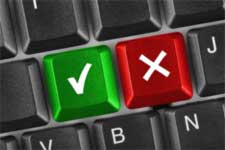 Preparing for a trade show, especially for small companies, can be a daunting task. Deciding what to include and how to set up an actual exhibit/display is one of the fundamental decisions you’ll have to make. First step is to contact the show managers and find out the size of the booth you will have, whether there is a wall space for your company sign, if there are electrical outlets available, and any other small items that you might be responsible for supplying.
Preparing for a trade show, especially for small companies, can be a daunting task. Deciding what to include and how to set up an actual exhibit/display is one of the fundamental decisions you’ll have to make. First step is to contact the show managers and find out the size of the booth you will have, whether there is a wall space for your company sign, if there are electrical outlets available, and any other small items that you might be responsible for supplying.
Here are a few other tips to keep in mind when creating your exhibit:
DON’T overstuff it. Product managers might want to display things that represent every brand or product your company offers. Partners might want their logo splashed all over your booth. Keep in mind that sometimes simpler is better. Booths overcrowded with displays, products, stands, etc., turn off prospective attendees and prevent you from quickly communicating why attendees should visit you.
DO simplify your message. Many exhibitors make the mistake of bombarding their booth visitors with marketing slogans. Instead choose the one core message you want to impart to potential customers and stick to that in terms of graphic presentations. Displaying fewer, but larger visual elements in your exhibit will reduce clutter and better garner an attendee’s attention and create a lasting impression.
DO focus on the cream of the crop. Instead of hauling your entire product line to a tradeshow booth and again cluttering your display, overwhelming visitors, and diluting your marketing message, showcase only your new and top-selling products.
DON’T rely on static displays. Any type of motion captures people’s attention as opposed to static displays. You can take advantage of this by playing a looping DVD on a widescreen TV or make use of a rotating display.
DO maintain a small, private area. If your booth is big enough, it’s nice to have a quiet, private area with a table and a few chairs to take attendees or promising prospects that might like to sit down and discuss your company and its product and services in more detail.
DON’T scrimp on carpet. This might sound silly, but after a long day of walking miles and miles on the unforgiving floors of huge exhibit halls, visitors will appreciate booths that have plush, padded carpet. And, so will your booth workers.
Trade Show Design Secrets: Keep It Simple!
What stands out at a major trade show or fair? Bright colors, bold designs, and simplicity. This is not news, yet trade shows remain filled with booths that are too complex and too cluttered – booths that attendees do not recall seeing because they make no impression.
The most common cause of a cluttered booth is trying to accomplish too many objectives. Generally, if you are overly ambitious, you will end up falling short on every goal. But if you are willing to make some choices, your exhibit can be brilliant. Check out Trade Show Exhibit Design: The Creative Brief for some valuable planning tips that will help you to make an impression.
A focused message
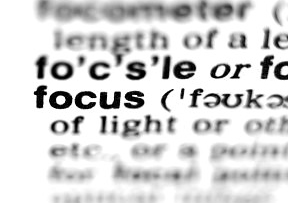 Think about what you really want to communicate with your booth display and write it down. If it is one, focused goal, then you are on the right track. Once you have a singular mission, work with your design team to bring it to life. Focus on your one main message. Carry that message into everything you present at the trade show – your booth, collateral, merchandise presentation, sales pitch, staff clothing, everything.
Think about what you really want to communicate with your booth display and write it down. If it is one, focused goal, then you are on the right track. Once you have a singular mission, work with your design team to bring it to life. Focus on your one main message. Carry that message into everything you present at the trade show – your booth, collateral, merchandise presentation, sales pitch, staff clothing, everything.
Keep your booth open and inviting
Eliminate anything and everything that creates a barrier to attendees or will overwhelm them with unnecessary information. A few examples:
- Be clear and straightforward about your company. Don’t tell your complete corporate history – only what is needed to make the sale.
- Present a few products merchandised to showcase your most important products. A booth packed with a deep product assortment will just become clutter.
- Banner graphics can be great unless they are filled with complex graphic images or too many words and logos. If you want people to actually read what is on your banners, limit the amount of information you put on them.
It all sounds so simple, but choices are always difficult.
To create a singular, power statement you have to be willing to make some hard choices. I usually start with an empty space and challenge myself to only put in what is essential. Maybe the product display should only include your newest products. One large multipurpose element can often replace several small elements and eliminate a lot of clutter. Look for ways to build in storage to hide extra sales literature and other supporting materials.
Be remembered.
Your trade show exhibit will be more effective and more memorable if it makes a clear statement about your company and your products. Question everything and, if something does not support your core message, do not let it into your exhibit.
If you want your trade show booth to be the star of the show, you have to have one message and it has to have a chance to be seen.
Trade Show Exhibit Design: The Creative Brief
When you need to have a new trade show exhibit created, plan to discuss your schedule, budget, exhibit space, how frequently the booth will be used, and if there are any special requirements for the exhibit. If you want to create a breakthrough exhibit, also take the time to put together your creative requirements.
 Even some of my most organized clients rarely organize and formalize their creative requirements before they start working on a new trade show exhibit. They generally start by providing some basic verbal instructions about the design requirements. Then spend a lot of time gathering information in response to questions from the creative team.
Even some of my most organized clients rarely organize and formalize their creative requirements before they start working on a new trade show exhibit. They generally start by providing some basic verbal instructions about the design requirements. Then spend a lot of time gathering information in response to questions from the creative team.
Letting your vendor work solely from verbal input is the best way to waste time and money. Sometimes it results in a flashy but generic exhibit, and communications disconnects. On the other hand, if you work with your design firm to create a formal creative brief, you are well on your way to creating an exhibit that fully represents your brand and engages your target customer, and makes you look like a pro.
Look for a partner who will collaborate with you and create a formal brief – a succinct statement of what you are trying to accomplish and communicate with your new trade show exhibit. Once you have a formal brief, it’s easy to run it by key stakeholders and make sure that you are on the right track. It also serves as a guide for the creative team so that they clearly understand their mission.
Most of what you need to provide is probably readily available. A few phone calls or quick visits with co-workers and you will have most of the answers. The format that you use really doesn’t matter. Just gather the answers to the key questions and work with your exhibit marketing company to create a brief.
Here’s a list of preliminary questions that I have found are a useful starting point:
Brand and Company Mission:
What is your brand position?
What is your corporate mission?
These are usually brief formal statements that are prepared by the Marketing Department.
Background:
What do you want to achieve with the exhibit?
How will you measure the success of your trade show effort?
What’s going on in the market? Any opportunities or problems in the market?
Your Target Customer:
Who is your target customer?
What should be avoided in talking to this audience?
What do they believe about your company before we tell them anything?
Is there an important secondary audience?
The Message:
If you could get one sentence through all the clutter, what would that be?
If they asked you to prove it, how would you do that?
Are there any other major points do you want to communicate?
Be critical and honest about the answers to these questions. It is great to focus on your company’s strengths but it is also important to make sure the creative team knows your company’s weaknesses and challenges.
Once you have the answers, work with your exhibit design firm to develop a creative brief that provides a clear statement of expectations and lay out a clear framework for the creative team. I have found that the most effective creative briefs result from a collaboration between the client and their design team.
Do you have a collaborative relationship with your trade show exhibit design firm? Do you think it matters?
Ways to Slash Trade Show Costs
Trade shows are excellent forums to showcase new products and reach customers and prospects with your marketing message, but they are expensive. Cutting trade shows out of your marketing budget entirely, however, is pound-wise and penny foolish. 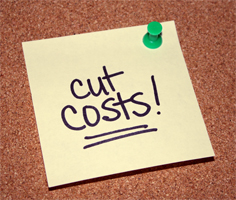 Let’s take a look at some ways you can shave costs out of your trade show budget without sacrificing the impact of your exhibit.
Let’s take a look at some ways you can shave costs out of your trade show budget without sacrificing the impact of your exhibit.
Rent instead of own. Some companies get weighed down by the expense of owning their own exhibits; not just the initial expense but the costs associated with storing, shipping, prepping, maintaining, as well material handling expenses once it has been received at the show site.
Bring your own supplies. Renting supplies at a trade show can put a serious crimp in efforts to reduce costs. Though it might seem more cost-efficient to avoid the costs of shipping things such as tables, carpet, chairs, etc., the reality is that you can save by shipping and reusing your own.
Leverage tradeshow materials for other uses. Banners or posters used at trade shows make great visual advertisements in the front window of retail stores. Brochures not given out at shows can double for customer/prospect mailings.
Get handy. One way to save big is to bring your own tools and put your booth staff to work setting up everything that’s not mandated by trade show labor rules.
Negotiate booth rent. Exhibition companies have been hit pretty hard by the recession. What’s bad news for them could be good news for exhibitors. If you’ve exhibited at the same trade show for years, try and renegotiate your booth rent with the tradeshow organizer. Agreeing to sign a multi-year contract might help hasten a deal as organizers are looking to keep you as a long-term exhibitor.
Go smaller. Booth rent accounts for approximately 20% of your total trade show costs, so reducing the size of your booth can have an immediate and big impact on your bottom line.
Ship early. If you are shipping your exhibit or supplies to a show, be sure and plan to ship well ahead of time so you can send all items in the slowest, least expensive way possible. Also, check out whether you can ship some items locally instead of from your location.
Top Ten Tips – How to Work a Tradeshow Booth
Your company has invested a great deal of money into a beautiful tradeshow exhibit and you’ve been selected to work the booth. How do you prepare yourself to make the most of this opportunity?
Here are some helpful tips:
- Create a preshow plan. Profile the type of prospect you wish to attract to better focus your efforts. Get a preregistration attendee list and contact as many of the suitable prospects as possible before the show. Extend a personal invitation to your tradeshow booth and give the attendee a reason to stop by – something new for them to see works well. You should contact any very important prospects to try to set up an appointment at the tradeshow.
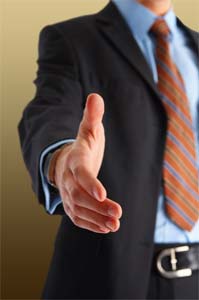 Familiarize yourself with the entire convention agenda. Be aware of keynote speakers, educational sessions, and social events. Prioritize them and make sure to attend. Be prepared to discuss these sessions with prospects who come to the booth.
Familiarize yourself with the entire convention agenda. Be aware of keynote speakers, educational sessions, and social events. Prioritize them and make sure to attend. Be prepared to discuss these sessions with prospects who come to the booth.- Study the design of your exhibit. Read and understand the graphics. Have a plan for giving the prospects a quick tour of the booth and recording lead information for follow-up.
- Develop a plan to deal with current customers efficiently so that they do not monopolize precious prospecting time.
- Memorize a few greetings. Try not to ask questions that can be answered with a simple yes or no. Your goal should be to encourage the prospect to talk about themselves or their company so that you can tailor your presentation to their interests.
- Be approachable. Refrain from eating in the tradeshow booth, checking your Blackberry, or holding extended conversations with coworkers. It is human nature not to be rude and interrupt people and it will make your tradeshow exhibit seem uninviting.
- Be sure to have a disengagement line or two. The best one is “thanks for stopping by”, but if you are talking to an important prospect it might be better to say “where do we go from here?” or “how would you like me to follow up?”
- Take notes. There are so many people and so little time. Brief notes will help you to be more effective with your follow-up.
- Try to schedule breaks throughout the day to deal with voicemail, email, and just catch your breath. Remember, quality is more important than quantity.
- Follow up in a timely manner, meaning the next day. Don’t risk letting your prospect forget you.
Are you interested in exhibit management for your entire tradeshow program? Our exhibit management is based entirely on strategic planning. Contact us today if you are in need of trade show help.
In a Blink of an Eye, a Trade Show Decision is Made
Swarms of attendees are in the aisles, but who will come into your booth? Is one of the attendees your next big prospect? They could be…
The bestselling book, Blink: The Power of Thinking Without Thinking, by Malcolm Gladwell, informs us:  “A person watching a silent two-second video clip of a teacher he or she has never met will reach conclusions about how good that teacher is that are very similar to those of a student who has sat in the teacher’s class for an entire semester. That’s the power of our adaptive unconscious.”
“A person watching a silent two-second video clip of a teacher he or she has never met will reach conclusions about how good that teacher is that are very similar to those of a student who has sat in the teacher’s class for an entire semester. That’s the power of our adaptive unconscious.”
Considering the implications of this in trade show terms, here are some items to be aware of in working with buyers and prospects in your exhibit and creating the best possible impression.
The snap judgments derived in those seconds will determine whether someone perceives you worthy of their time. And whether they will move towards any type of engagement.
When you are creating your booth property you must remember that it will be placed in a sea of other sights and sounds. How do you create a physical structure that is welcoming and delivers your core marketing message to the trade show audience? Not an easy task.
Can your booth live up to its marketing potential? Here are a few questions your team should consider as you prepare for the show.
- Will a person who is unfamiliar with our company know who we are and what we do via our graphics?
- Do we clearly communicate our solution message in our booth in images and text?
- Is your booth open and inviting so that someone is drawn into it?
- How can you tactfully interrupt someone who is walking the aisle and engage them with video, music, graphics, a demonstration, etc.?
We know that most attendees come to the show with an agenda, and use the time to evaluate vendors before making a final decision. When a buyer is in the information gathering mode, as is generally the case at an event, there is a relatively small window of opportunity to grab their attention. What happens is they use this time to count in and leave out suppliers based upon their experience in the booth with them.
Starting the Conversation with a Prospect
Let’s assume that your booth has caught the attention of someone walking the aisle. The first step in any engagement process is a conversation. It is conversation which is focused on the attendee, not you.
Do not start the conversation with, “Can I help you?” This is an immediate turn-off! Use open- ended questions to probe if this person is a prospect at all.
The best booth personnel don’t sell, instead they “gather” the information on what type of prospect they are engaging. Gathering information is the opposite of selling.
Start the conversation with a “pick up line” that will solicit a thoughtful reply, like one of these:
- What conference session has been the best one, thus far?
- Wasn’t the [keynote speakers name] funny, entertaining, etc. What did you think of him/her?
- What booth on the floor has been the most compelling for you?
- What’s the best thing you’ve seen at the show?
What are the qualifying questions that let YOU determine if they are a prospect for you? If you get these questions answered, then you know where to take it from there!
Once you have the conversation started, then you can ask other open-ended questions which can help you qualify them. Here are some examples for you:
- What’s your biggest challenge this year?
- What did you hope to find at the show?
Now that you have their attention…are they someone you want to talk to? Ask a question about THEIR responsibility at the company. Like:
- “Are you responsible for _________”
If no…ask “who is?” - “Are you involved with _________”
They may be a source of information about potential projects. If they are not the right person, don’t waste another second with this person while potential “hot” prospects are walking by the booth. Escort this person out of the booth quickly and politely so you can engage with the right prospect.
Now if you find a decision-maker for your target company-type…take it a step further and find out if a project is on the horizon by asking:
- “Is your company planning a __________?”
- “Have you chosen a vendor?”
- “When will you make that decision?”
- “What are the criteria for ______?”
- “What is the budget for ______?”
The questions you are asking should match the lead gathering device the booth personnel have. You could be using a lead card, an electronic device, or a handheld smart phone to capture relevant information. Make sure all members of your booth team know what pieces of information you want gathered and someone is monitoring for quality.
By gathering as much information and recording it on the show floor, it will make the follow- up process more robust. In a future post we will discuss several proven follow-up activities that can separate you from the competition and move the prospect along the sales funnel.
Trade Show Preparation Checklist
Things to do before leaving for a trade show
Create a trade show project timeline. Take a look at the show exhibitor manual that is available online. Many show manuals include a chronological list of deadlines that make an excellent starting point for your personalized project timeline. Things that you may add to this list include: preparation and shipment of your products and literature, making your travel arrangements, hotel accommodations for your staff, making arrangements for activities, dinners, etc. during the show.

- Make a folder or binder to contain all of the confirmations and show services forms that you have submitted.
- Create a list of important telephone numbers. These are specific to each show. This can be done electronically or manually but should be something that you have with you at all times in the trade show city.
- Check the weather in the trade show city. Make sure that you bring the right clothes for the climate and keep in mind that the convention center might not be heated or air conditioned during installation and dismantling.
- Take a good digital camera to document things. Cell phone cameras are getting better but the best results can be expected if you use a decent quality portable digital camera. You will want to photograph your display to reference for future show planning. You may need to document damage to items during shipment. You may wish to take some shots of competitors’ displays or other exhibits that you find attractive.
- Plan how you will evaluate the show and collect the necessary information.
- Make sure that your booth staffers are aware of the show hours and when they are to work the booth.
- Plan a booth staff orientation meeting in the booth before the show opens on the first day to make everything work smoothly.
- Think about dismantle. Where and how are your materials being shipped after the show? Have labels and paperwork filled out to eliminate unnecessary confusion during dismantle.
- Leave yourself sufficient time to catch your plane. Dismantle will go much better if you are not in a rush to get to the airport.
Do you need trade show help? Click here for a list of services Alexis Exhibits provides to make sure everything goes according to plan.
Good luck with the show!
Make ’em Laugh: Ten Ways to Entertain Trade Show Attendees
Use Entertainment to Increase Trade Show Booth Traffic
You’ve spent the money on your booth. Your booth staff have been well trained to deliver persuasive sales pitches. Your displays are in order; your brochures are neatly stacked. Your badge scanner is on the ready. Now, you just need to get the attendees in your booth so those employees can get to work generating the leads and sales needed to justify the expense of the tradeshow.
Sounds easy, but on a busy, chaotic tradeshow floor there’s a lot of competition for the eyes and ears of potential customers. So how do you pull attendees away from competing booths? For one, you need to deploy a creative strategy that sets your company apart from the sea of competitors and increases booth traffic.
Let’s look at ten ways your company can use entertainment to increase booth traffic:
 Magicians. It’s more than Abracadabra and Hocus-Pocus. There is something about magicians that brings out child-like awe in everyone, including your most sought-after sales prospects. Well-trained magicians can weave the wonder of magic with your company’s vital marketing messages, providing both entertainment and education.
Magicians. It’s more than Abracadabra and Hocus-Pocus. There is something about magicians that brings out child-like awe in everyone, including your most sought-after sales prospects. Well-trained magicians can weave the wonder of magic with your company’s vital marketing messages, providing both entertainment and education.- Interactive games, such as putting competitions. For many, golf is somewhat of an addiction. This is why attendees won’t be able to resist taking their chances to sink the most putts, land a coveted hole-in-one, or beat their colleagues in the lowest score of three shots competition. Add prizes with your company logo to up the ante.
- Sports simulations and virtual, computer-enhanced experiences. Immerse attendees in a custom-branded, virtual reality (VR) entertainment experience to not just lure them into your booth, but to captivate them. Choices include baseball, Indy and NASCAR car racing, golf, flight simulators, laser shooting galleries, and motion thrill rides.
- Money-blowing machines. This might sound cheesy, but in today’s dismal economy, nothing grabs people’s attention like the potential to win money. Attendees can win a chance to spend a minute in the telephone-size cube to collect as many prizes (cash or customized coupons for your company’s products or services) as they can.
- ATM Money Machines. Following along on the previous idea, this relatively new promotion draws attendees in for a chance to use the ATM machine, which dispenses real coupons, prize vouchers, gift certificates, and customized bills good towards purchases from your business.
- Live entertainment. These can include comedians, circus performers, tribute bands, and dance troupes. Great at garnering people’s attention who might want to watch or interact with an entertainer. Make sure the performers are well-versed in your company’s products or services and have the skills to disseminate information or sales messages to draw attendees into your booth to hear more.
- Customized Event Photography. Thanks to computer software, attendees can have their 15 minutes of fame by seeing photos of their faces on various unique backgrounds (Sports Illustrated cover, standing behind a presidential podium, posing with the Queen of England, etc.). Incorporating your logo somewhere on these unique, unforgettable keepsakes —one which attendees will likely not throw away—ensures the longevity of your marketing message unlike most tradeshow, throwaway gimmicks.
- Celebrity Look-Alikes. Try as they may to deny it, people are naturally drawn to celebrities, even when they aren’t the real deal. Add a photographer and nearly everyone will stop to get his or her picture taken with a “star.”
- Psychics and fortune tellers. Why not everyone is a believer in psychic powers, having a psychic or fortuneteller in your booth to do Tarot card and palm readings or handwriting analysis is a fun way to attract people to your booth. Good ones, who work the professional trade show circuits and often double as motivational speakers, are able to not just stop traffic, but deliver professional, informative and memorable messages about your company and its products.
- Caricature sketch artist. An oldie but a goodie, a cartoon sketch artist can be a very effective trade show booth secret weapon because it packs of double punch: it helps “draw” people into your booth and creates a memorable giveaway for attendees. Make sure that all caricature sketches have your logo on them somewhere to ensure longevity of your marketing message.
Archives
- July 2021
- June 2021
- May 2021
- April 2021
- October 2018
- September 2018
- August 2018
- July 2018
- June 2018
- May 2018
- April 2018
- March 2018
- February 2018
- January 2018
- December 2017
- November 2017
- October 2017
- September 2017
- August 2017
- July 2017
- June 2017
- May 2017
- April 2017
- March 2017
- February 2017
- January 2017
- December 2016
- November 2016
- October 2016
- September 2016
- August 2016
- July 2016
- June 2016
- May 2016
- April 2016
- March 2016
